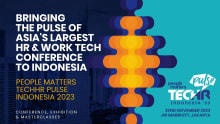Human Resource in the new world order

“Human Resource isn't a thing we do; it's the thing that runs our business.” - Steve Wynn, renowned American businessman
The ongoing COVID-19 pandemic has led to large-scale shifts in the way people work and how businesses are done. As employees struggle to cope with these shifts, organisations and corporates are working towards establishing meaningful connections between colleagues and employees.
HR leaders are rethinking workforce and employee planning, management, performance and strategies. As a result, new HR trends are emerging that will most likely change the way the workforce is managed now and in the future.
Below are some trends we will witness in 2021 and beyond:
The rise of “anywhere talent”
With the introduction of Work-From-Home (WFH) as a norm rather than an exception, the constraints and barriers of location are removed. This has opened a huge base of talent across the country for roles that no longer have location constraints.
Organisations are harnessing technology to hire and work with employees from anywhere across the country. They are also looking at hiring internal talent from across locations and functions for open roles. They are finding value in upskilling and reskilling existing employees for newer roles and expectations. They are also looking at repurposing jobs using technology to stay contemporary and relevant in the dynamic world.
Hiring as a seamless and more effective experience
Businesses are now witnessing a massive shift in the space of hiring. With HR managers getting an opportunity to take a break from hiring in the first two quarters of the financial year, there was also an opportunity to rethink the hiring experience. They are now working to make hiring more effective by harnessing data and analytics to match the required skills. This can not only improve search and overall process more effective, but also ensure a seamless experience for the candidate.
Upskilling and reskilling for the future
Rethinking skills of the future will be one of the biggest focus areas in the future. Organisations will also lay emphasis on preparing employees to deliver on the new skills to make jobs more productive. When upskilling and reskilling employees for the future, companies may face some challenges. One major challenge will be identifying the future skills and the second will be coming up with newer ways of building these skills.
Prioritising employee wellbeing
The ongoing pandemic has brought a much-needed focus on employee wellbeing. From being a frill, the wellbeing of employees has become a norm for an organisation’s success. To help organisations stay relevant and thrive in the future, employee experience will have to be designed with three considerations. One is performance, the second is learning and growth, and the third is employee wellbeing.
New ways of designing work, workforce and workplace
2021 and the future after are going to be about finding the balance between working from anywhere and working from an office. Organisations will focus on finding a dynamic solution to maintain this balance. The solution needs to suit their business model, organisation culture and performance requirements. This is going to be one of the biggest shifts in the way organisations work. It will require them to redesign their policies, technology, practices and culture to define newer ways of working.
Inclusion and diversity
In the future too, organisations will have to continue to work towards encouraging diversity as newer talent is available now beyond location constraints. They will also have to encourage inclusion in this new highly distributed and virtual setup. This will definitely require new ways of thinking for enablement.
These trends will reshape the way HR departments function in the future, and several companies are already working towards implementing them. They are developing HR infrastructure and functions to deliver superior experiences to both existing employees and new candidates. However, to adapt to the trends of the future more effectively, HR will not only have to develop skills and strategies, but also choose the right technology to manage a diverse workforce and a diverse workplace environment.
















